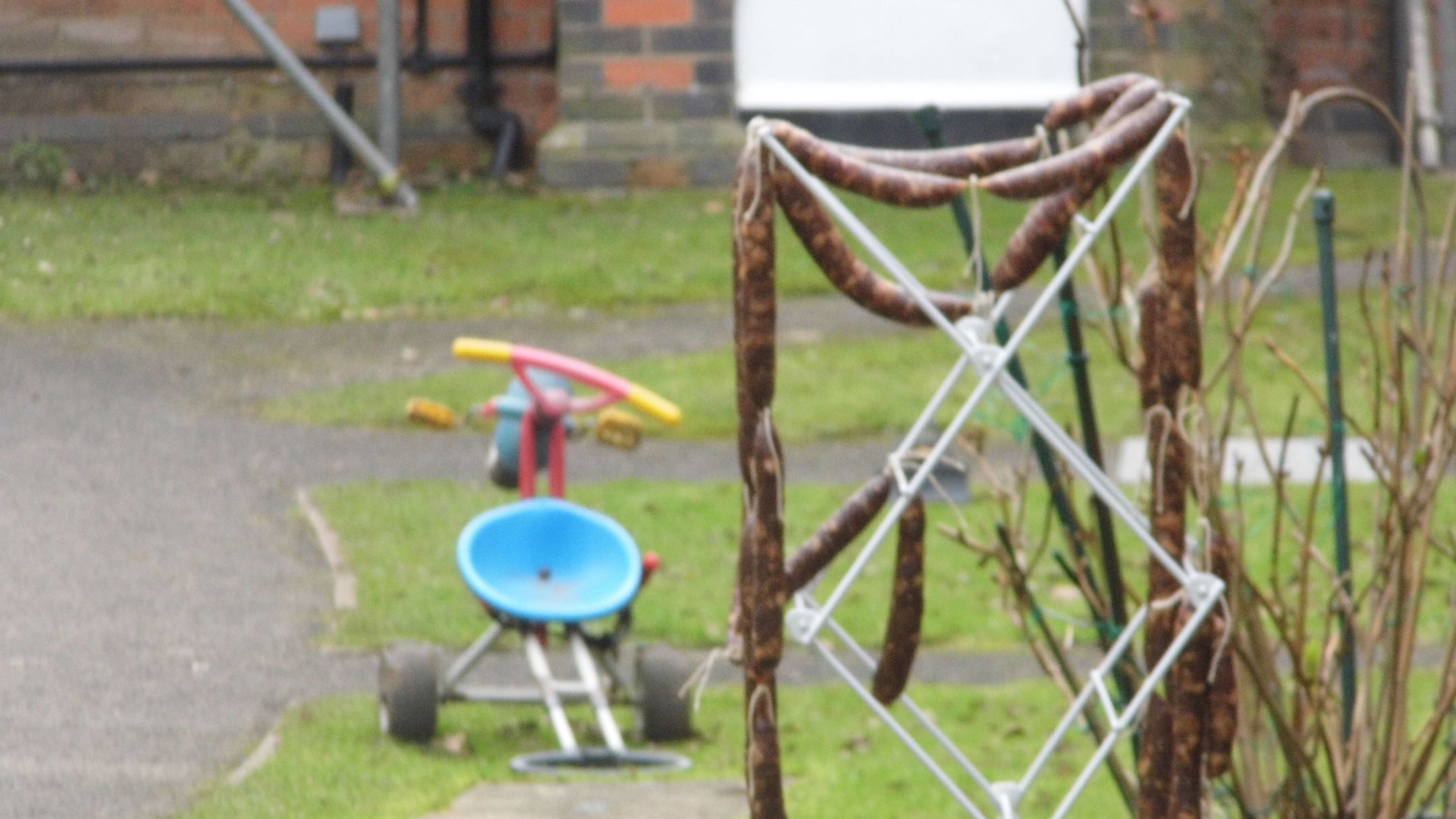This essay begins with two brief accounts—one of arrival and the other of vanishing. It was the late summer of 2005 when we—my partner, young daughter, and I—moved to the UK, where I was to take up a lectureship at the School of Theatre, Performance and Cultural Policy Studies at the University of Warwick. I came on a Tier 4 working visa, to last for two years, after which I had a choice of either applying for Permanent Residence or UK citizenship. Given that we were coming on Canadian passports (we had emigrated to Toronto in 1995 from the former Yugoslavia as landed immigrants and acquired Canadian citizenship three years later), the whole process of this second immigration was smooth and easy, at least from the administrative point of view. It had eventually added to our experience of having multiple passports and various visas as we have been exercising modes of, what Aihwa Ong (1999), called “flexible citizenship.”1
We chose to live on campus for the first year, in one of the university-owned cottages, tucked away in a small woodland across the road from modern University buildings. On our arrival at Cryfield Cottages, as this housing for new staff and post-graduate students with families was called, a group of children ran to the gates to greet us. Some of our new neighbors emerged shortly after, helped with the luggage and offered to take us to the near-by supermarket. The families, living in rows of identical red-brick cottages, were from all over the world. There was the Filipino couple with a little daughter, the Egyptian family with three kids, the French-Canadians, the Italian family relocating from London for a post at Warwick, the Saudi family with two boys and an Indian nanny, the Singaporean who always complained about the poor internet connection, and the Malaysians in the only detached cottage (I still have the hand-painted tablecloth they gave me as a parting gift a year later). From the moment we walked through the gate and onto the sun kissed communal garden peppered with scattered toys, we became part of this accidental community—a community that could easily be framed as an illustration of the narrative found in Arjun Appadurai’s argument for a postnational global order. Appadurai coins the term “ethnoscape” to describe “the landscape of persons who constitute a shifting world in which we live: tourists, immigrants, refugees, exiles, guest workers and other moving groups and individuals.”2 We were indeed one such landscape—a micro ethnoscape—in a somewhat unexpectedly bucolic setting.
When the boys were at school and her employers at work, the Indian nanny/maid would go for walks—her itinerary consisted of making full circles around the communal garden. I had never seen her leaving or returning from somewhere off the premises. I was outside, hanging washing to dry, when she approached and we started to chat. She was from Northern India, working for the Saudi family. She did their housework and helped with the children. They arrived to the UK shortly before us; she came with the family as domestic help. Her own children were grown up, so she was able to take the job. She sent her earnings to her family in India. She spoke confidently about this arrangement almost with a sense of pride. The deal, she claimed, was really good: the employers covered everything, she had no expenses and she was making $35. “A day?” I asked. “$35 a month….” We both spoke in somewhat broken English, trying to adjust our ears to each other’s accent. So, I thought I misunderstood and kept pressing on: “… $35 a day you mean?” “$35 a month. That’s good money,” she said firmly. “Oh, all right,” was all I muttered, a bit more might have been written on my face as conflicting thoughts sped through my mind: Should I tell her that $35 a month is way below minimal wage in the UK as she is indeed working here now? She speaks with such pride of how she is able to support her family, who am I to tell her she is not doing as well as it appears to her? Yet she is practically exploited, how can I not say anything? Maybe it is a language thing after all, maybe she somehow mispronounced the amount. We exchanged polite goodbyes; she went on with her walk, I went on with my washing.
This was the last time I saw her. In the days to follow it rained heavily, the communal garden was deserted, scattered toys lay lifeless in the wet grass, I hardly saw any of my neighbors. One evening there was a knock on the door. A rain-soaked policeman stood in front of me. They were going door-to-door asking if anyone had seen something unusual or suspicious lately. The Indian maid, who worked for the Saudi family in cottage number nine, had vanished without a trace. Has anyone known her a bit more? Has anyone talked to her? She did not take anything. She left all her belongings in the house. Even her passport.
Semiotics of Vanishing: Scenarios of Representation and Modes of Reconstruction
Nearly ten years later, as I joined the project “Gender Citizenship: Manifestations and Performance,” I realized, somewhat unexpectedly, that my research on the subject should start with the Indian maid, our encounter by the washing line and the scenarios of her disappearance. The question is, where does this story of disappearance belong? How do I speak about it given that its main protagonist is absent, unable to provide her own account of the events? Where is its protagonist situated within various modes of investigation and representation? How is she shaped through different narratives, from the text of the police appeal and her employer’s reaction, to my own recollection and imagination? Can she be identified within abstract theories of transnational citizenship and more concrete data emerging from social research into domestic labor and migration? My investigation, however, is not so much trying to resolve the disappearance as it is trying to find its context. The dramaturgy of the police investigation is seen here as a linear one—unfolding by rules of cause and effect, with eyes on the resolution. My investigation is more of a Brechtian kind, aiming at understanding how and why it happened. The goal is not so much to recollect and resolve, but to defamiliarize the recollection. Yet I will still play detective a bit looking for clues and signs in obvious places—the site of our encounter and of her vanishing; and in somewhat less obvious ones—critical theory and sociology.
Following the disappearance, the police issued a public appeal to trace the missing woman. I had not seen the appeal at the time, I found it only recently as I was researching for this project. The text provided some new information such as the exact age of the woman (46) at the time she vanished, and her name. It also recorded the precise date and time of her disappearance and it confirmed the image of her that has stayed in my memory: her dark-colored, long kurta, and the zip-up fleece cardigan to keep her warm. It evoked the narrative that had started to emerge within the Cryfield community following her disappearance, too. According to that narrative, the woman wondered off on a whim, possibly in a moment of irrationality, leaving all her possessions behind, including her passport. The only thing she might have taken with her was a Bible. The text of the police appeal conjured, yet again, the image of a disoriented woman wandering the fields of the surrounding countryside, the Bible clutched in her hands. A moment of mental instability, a psychotic episode, perhaps? Maybe she was suicidal (her body was never found, though). “She was left on her own with the children so often, luckily nothing happened to them,” reflected a neighbor. One person recalled seeing an unknown man in front of cottage number nine a day before the maid’s disappearance, sheltering in the doorway, waiting for somebody. However, the police appeal pointed out that the Indian nanny was “unknown to anyone in the UK” beyond the family she arrived with and the Cryfield community. The police drafted a profile of a foreign woman through the narrative of her employers and glimpses of her collected from the Cryfield neighbors who, admittedly, barely knew her. The man in the doorway remained an inconclusive lead, so the narrative emerging from the police appeal resembled essentially a well-known trope: it was a migrant version of “the mad woman in the attic.”3
My own recollection of her disappearance has until recently also been grounded in literature. It begins a few nights before the disappearance, with cries coming from the darkness of the woodland encircling the cottages. The cries sound like a child in terrible distress, yet there is something nonhuman in this unbearable howling. Not a single soul in the rows of red-brick cottages can sleep. The children are getting restless. Adults, alarmed, gather in the communal garden, staring into the darkness behind the cottages—into the invisible out of which this unbearable, inexplicable sound appears to haunt us all. “It’s a fox,” somebody finally dispels the terror. In my literary imagination though, the connection between the uncanny nocturnal sound and the disappearance of the maid were too evocative to ignore. Even more to it was in the names: the Cryfield Cottages situated on Gibbet Hill Road, named after a scaffolding for public hanging, the gibbet, that used to stand there. So, inevitably, the genre of my recollection of the maid’s disappearance evolved into a ghost story. My contextualization of events, unfolding along the cryptographic leads in the tradition of Edgar Allan Poe, and the narrative constructed through the police appeal, had something in common though—both were apolitical.
Private/Rights
When, a few months ago I walked through the gates of the Cryfield housing estate for the first time since we moved out, I was armed with a camera. I was trying to find another way to frame the case of the maid’s disappearance. It was early afternoon of a grey day; the place was quiet and sleepy, just as it used to be on such days when I lived there. I pointed my camera towards the doors and windows of the red-brick cottages, I zoomed on cottage number nine, I lifted the camera towards the sky, then I turned it towards the woods, I zoomed in on the lost toys hidden behind bushes, boots in doorways, a stroller, a curious string of home-made sausages drying on a washing stand…
These objects emerged as evidence of daily life amidst the unusual stillness of the communal landscape. At first I recognized a ghosted site, reinforced by the presence of objects that trigger memories of daily life in Cryfield and absence of people. The place appeared the same as when I had lived there: if I knocked on the door of Cottage number one (where we used to live), a ten years younger version of myself with a toddler in tow might have answered. Then I did the walk, the maid’s daily stroll—a few circles around the garden passing by the back entrances to the cottages. I let the camera capture the images on the path, variations perhaps of what she saw during these moments she had to herself.
On the second round, already the walk felt monotonous and repetitive. And very lonely. My memories of life in the Cryfield Cottages have always centered on the communal, on the sense of belonging to an instantaneous transnational community. If anything, this set-up circumvented one of the typical syndromes of exilic experience—loneliness. Yet, this simple, self-conscious act of walking in the footsteps of someone else made me question what I had remembered: how did we belong to this small transnational community? Did we all belong in the same way? Did we all have the same coordinates of outside and inside—did we have the same options of mobility? On the third stroll round the cottages, what once seemed like a transnational heterotopia suddenly started to feel like a lonely, liminal space—a non-place (in Auge’s sense of the term4), with no connection to the outside. A paper by Sabika al-Najjar, published by the International Migration Program in Geneva, offers a possible glimpse into the life of the Indian nanny within the mini-“ethnoscape” of the Cryfield Cottages:
Domestic workers are making a big sacrifice by leaving their homes, to seek work overseas in an unknown world. For most of them, the move to the Gulf is also the first time they leave their village or town. Many immigrants consider the different Gulf States as the land of opportunity. The reality is far different from that. Their days consist of heavy and long hours of work, loneliness in a society that is totally strange to them.5
The Cryfield cottage was the second place of migration for the Indian nanny, and possibly yet another strange place within which she was cast as the Other.
My next strategy was to capture images connected to domesticity and domestic labor: a broken peg in the grass, rows of empty washing lines, even the sausages drying outside…
Then I tried to penetrate a bit deeper into the interiors, aiming the long camera lens at the windows, trying to see through, to capture objects and images of domestic work. A woman looked at me through the window suspiciously; even though I was quite far she must have felt the intrusion and quickly drew the curtain back. I captured a few things: kitchen utensils, pots, a shopping bag, a flickering television screen in cottage number nine.
Another woman came to the door to ask if I was a Cryfield resident. All in all, I got very little “evidence” to piece together a possible scenario of domestic life and labor behind the curtains and closed doors of the cottages—and I was already on the verge of invading the residents’ privacy. However, my failed attempt to capture the images speaks a lot about the nature of domestic labor in general, and the Indian nanny’s job in particular. Domestic labor follows the pattern of domestic life—it unfolds in the private domain, it is hidden from view, and what we see from the outside may not be what it is on the inside.
The private nature of domestic labor poses a difficulty when it comes to protecting the rights of domestic workers. Today, we find an increasing number of international resolutions concerning migrant workers’ rights (i.e. the UN International Convention on the Protection of the Rights of all Migrant Workers and Members of their Families6, two conventions on migrant workers by the International Labour Organisation7). In his book The Inhuman Condition, Pengh Cheah explores the axiomatic link between transnational migration and actualization of humanity in relation to the rights of female domestic labor. He points out that even though these resolutions emphasize gender equality and equal treatment of indigenous and migrant workers, “the male worker remains the implicit norm of the migrant worker.”8 The notion of equal treatment also proves irrelevant in the area of domestic work because, as Cheah argues, “indigenous domestic workers are also generally not protected by the labor laws of host countries because of the patriarchal-ideological prejudice that reproductive work is ‘private’ in character and was traditionally unpaid.”9 Bahrain, which has one of the biggest influxes of migrant domestic workers from India and Southeast Asia, is the case in point. The Bahrain “Labour Law for the Private Sector” (1976) exempts “domestic servants and persons as such” from the purview of the law.10 The exemption is due to the private nature of housework. “House workers are treated as a part of the family,” said a Ministry of Labour spokesman. “Disputes should be settled internally whenever possible. Or else the privacy of households is desecrated”.11
Cheah warns that, in general, domestic workers are in an especially precarious situation because they are isolated in their respective households and closed to public scrutiny”12. In her article “Contract Enslavement of Female Migrant Workers in Saudi Arabia and United Arab Emirates,” Romina Halabi backs Cheah’s point focusing on the context of migrant labor within which our Indian maid also happened to be situated. Due to the individualized working environment of household labor, migrant women working as domestic help “are the group most vulnerable to exploitation in Saudi Arabia and UAE. Domestic workers are often denied freedom of movement, and are either locked inside or forbidden to leave home without permission”.13 This, of course, takes us back to the circular walks—the daily routine of the Indian maid in Cryfield Cottages—and why did she never leave the grounds of the cottages until the day she vanished? Was she forbidden by her employers to go beyond the premises of Cryfield? Was the outside world too foreign for her, so she preferred to stay within its parameters? Was she what Cheah, drawing on Foucault, describes as a product of bio-power—a form of being that is essential to production itself? He writes:
It is assumed that domestic workers are free individuals who can consent or refuse to work in a given household. But this insistence on free consensual subject[s] masks the ubiquitous operations of biopolitics. For the consensual subject is always already a product of biopolitics.14
Kafala
“But why did she not take her passport?” I asked. We ran into each other in a cafeteria at Warwick University, the former employer of the vanished Indian nanny and I. “To slip through the immigration net more easily,” she said in a tone of resignation. “What do you think happened to her?” I followed up. “She found a better opportunity. It happens all the time. You take them with you, you pay for them…but as soon as they find something better they run away.” But why did she run away, could she not just quit? An answer came from Halabi’s research:
Relying on employment agencies and brokers, migrant domestic workers enter contractual bondage with employers whom they have never met before, leaving themselves vulnerable to abuse and exploitation….In order for a migrant to work in Saudi Arabia or the UAE, she must first secure a visa through a method of sponsorship known as kafala, which legally binds the worker to her employer. Although both the sponsor and the worker are capable of breaking the contract, this ostensible equality is merely a ruse, because if the worker breaks her contract, she must pay the cost of her return ticket (a charge that would otherwise be paid by her sponsor). She may also be found or forced to pay debts to the recruitment agency. Through the system of sponsorship, the fate of the migrant worker is entirely dependent upon the goodwill of an employer who, at any time, can threaten her deportation if unsatisfied. Once in their host countries, these migrants are immediately required to surrender their passports to their employers.” 15
If we quickly look back at the appeal issued by the Warwickshire police, the most puzzling details of the case could be seen in a different light now: the Indian maid left with almost no money, she did not take any credit cards, and she left her passport behind, as well. Why did she not take money? Because she did not have it. She said she made $35 a month (Halabi writes, salary in Saudi Arabia for migrant domestic help is up to $100 a month, most women get less, and some do not even get paid). Why did she not take any credit cards? Because she did not have any. Why did she not take her passport? The passport might have been in the possession of her employers and she might have not had access to it. And why she simply did not quit? Because she might have been under a kafala sponsorship contract, which made it practically impossible for her to break the contract.
Another question arises: who protects the rights of the Indian maid in this circumstance and how are they to be implemented? And more broadly, how do notions of Kantian universal human rights apply to her, if at all? This is also where Appadurai’s transnational regime still falls short, unfortunately. Cheah writes:
Traditionally, the protection of migrant workers has been largely to do with the domestic law of host countries because international law sets only minimal standards for treatment of aliens, such as the guarantee of the right of fair trial, human treatment in prison, and protection against arbitrary seizure of property. 16
Cheah asserts further that: “the migrant female domestic worker’s human rights can be effectively protected in the present or near future only by affirming the importance of political citizenship or membership in the nation-state.”17 For such rights to be claimed successfully, “labour-sending states need to have a strong bargaining position and the political will to demand just treatment for their workers,”18 so that they do not disappear into the “woods” of the transnational enthoscape.
The Indian migrant maid does not take place in the world of neo-Kantian cosmopolitanism19 nor in the scholarship of new universalism that has been, as Janelle Reinelt argues, pushing to do away with identity politics as outdated and even misguided. Reinelt, exploring both the shortcomings of universalism and the dangers of over-differentiation when it comes to citizenship, points out the need to view and understand citizenship in its full complexity—including aspects of race, ethnicity, gender, sexuality—not just as a document that protects individual legal rights.20 The Indian maid embodies this complexity, as a need for renewed identity politics to include different social strata and more varied geographies, while pointing to the limitation of citizenship as merely a legal category through which one’s rights have been protected. The limitations of legal citizenship, as this story of disappearance shows, is practical, as her rights could not have been effectively protected and she got lost in the gaps between legal systems of different countries. It is also ethical, epitomizing both the neoliberal denial of “any contextual or cultural markers beyond individual legal status” 21 (which here in itself becomes elusive) and the fine line between differentiation and discrimination in the context of international migrant labor. Cheah’s notion of political citizenship calls for implementation of more vigorous laws on the part of home nation-states. Yet, for this political citizenship to materialize judicially a political public sphere is needed within which, as Reinelt suggests, different iterations of citizenship could be performed as they become “conditioned by many factors and subject to dramaturgies of savagery as well as hospitality.”22
Feminization of Labor
The figure of the female domestic worker is not new; what is new is the sheer number of female migrant workers and the very long distances they travel. Barbara Erenreich writes, “Immigration statistics show huge numbers of women in motion, typically from poor countries to rich;”23 hence the term feminization of labor has emerged in recent scholarship to describe the trend. In their study Gender Dimensions of International Migration from Bangladesh and India: Socio-Economic Impact on Families Left Behind, Ranjana Kumari and Ischrat Schamin confirm:
Feminization of international labor migration is a global trend. The percentage of women in the migrant population (both permanent immigrants and temporary migrants) has been increasing in the post-war period, and now women comprise the majority of international migrants.24
Accordingly, Cheah identifies that another kind of cosmopolitanism “coexists with the high-end cosmopolitanism of talented professionals as its polar opposite: the cultural practice of the underclass foreign domestic helpers.”25 In Global Woman, Barbara Erenreich and Arlie Russell Hochschield make a similar point:
Thanks to the process we loosely call “globalization,” women are on the move as never before in history. In images familiar to the West from television commercials for credit cards, cell phones, and airlines, female executives jet about the world, phoning home from luxury hotels and reuniting with eager children in airports. But we hear much less about a far more prodigious flow of female labor and energy: the increasing migration of millions of women from poor countries to rich ones, where they serve as nannies, maids and sometimes sex workers.26
At the end, let’s go back to our encounter—the maid and me chatting by the washing line—and see where we stand within this framework of feminization of labor. We were both double migrants (her trajectory: India-Saudi Arabia-UK; my trajectory ex-Yugoslavia-Canada-UK). The two of us were the only two women on the small university housing estate who were neither students nor spouses of students or employees. We happened to be the only two women in the Cryfield Cottages at that time who came to the UK to work and supported our families with our earnings (albeit on alarmingly different salaries). Nevertheless, as far as our employment rights, immigration status, freedom to access our rights, and perhaps even our freedom of movement were concerned, we could not have been further apart.
Austrian playwright Peter Handke has a play entirely without words, called The Hour We Knew Nothing of One Another. It features various figures passing each other in a variety of constellations, temporarily shaping the space of their encounter. The pace accelerates, then slows down, then accelerates again as the figures briefly encounter one another before continuing their separate ways. There are moments in the play when it seems that these accidental encounters could almost give rise to a community, but then the figures disperse in various directions and the place is empty again. The semiotics of these bodies passing each other offers some glimpses of who they might actually be, but the encounters are too short, and it is not really possible to further follow anyone’s story. The figures remain strangers to one another. After all, the encounter by the washing line outside our Cryfield Cottages cannot fully resist literary framing: it belongs to the world of Handke’s play—it was indeed a moment “we knew nothing of one another.”
Notes
- Aihva Ong, Flexible Citizenship: The Cultural Logic of Transnationality (Durham and London: Duke University Press, 1999), 1–29. ↩
- Arjun Appadurai, Modernity at Large: Cultural Dimensions of Globalization (Minneapolis, MN: University of Minnesota Press, 1996), 33. ↩
- Sandra Gilbert and Susan Gubar, The Madwoman in the Attic: The Woman Writer and the Nineteenth-century Literary Imagination (New Haven, CT: Yale University Press, 1979). ↩
- Marc Auge, Non-Places: Introduction to an Anthropology of Supermodernity, trans. John Howe (London, New York: Verso, 1995), 75–116. ↩
- Sabika al-Najjar, “Women Migrant Domestic Workers in Bahrain,” International Migration Papers 47 (Geneva: International Migration Programme, 2002), 31. ↩
- UN International Convention on the Protection of the Rights of all Migrant Workers and Members of their Families, accessed October 10, 2016, http://www.ohchr.org/EN/ProfessionalInterest/Pages/CMW.aspx ↩
- For more information on these conventions, see Preventing Discrimination, Exploitation and Abuse of Women Migrant Workers—Booklet 4, June 1, 2003, accessed May 10, 2016, http://www.ilo.org/employment/Whatwedo/Instructionmaterials/WCMS_116364/lang–en/index.htm ↩
- Pheng Cheah, Inhuman Condition: On Cosmopolitanism and Human Rights (Cambridge, MA: Harvard University Press, 2006), 193. ↩
- Ibid., 194. ↩
- Bahrain Labour Law for the Private Sector, 1976, accessed May 10, 2016, http://www.ilo.org/dyn/travail/docs/666/The%20Labour%20Law%20for%20the%20Private%20Sector.pdf. The revised version of Bahrain’s Law for the Private Sector was implemented in 2012. This new version recognized more rights for women including more equality in wages, maternity leave of six months maximum, and breaks of up to one hour to breastfeed children, etc. However, according to Article 2 of the 2012 law, most of it stipulations still do not apply to: “Domestic servants and persons regarded as such namely gardeners, house security guards, nannies, drivers and cooks carrying out their job duties for the benefit of an employer or his relatives.” See Kingdom of Bahrain Ministry of Labour, “The Labour Law for the Private Sector,” 2012, accessed May 10, 2016, http://www.rrc.com.bh/media/141168/labour_law_2012__1_.pdf. ↩
- al-Najjar, “Women Migrant Domestic Workers in Bahrain,” 19. ↩
- Cheah, Inhuman Condition, 194. ↩
- Romina Halabi, “Contract Enslavement of Female Migrant Workers in Saudi Arabia and United Arab Emirates,” Human Rights & Human Welfare (2008), accessed January 19, 2016, http://www.du.edu/korbel/hrhw/researchdigest/slavery/fmd.pdf: 44. ↩
- Cheah, Inhuman Condition, 220. ↩
- Halabi, “Contract Enslavement,” 43. ↩
- Cheah, Inhuman Condition, 190. ↩
- Ibid. ↩
- Ibid. ↩
- Dan Rebellato, Theatre & Globalization, (Basingsoke: Palgrave, 2009). ↩
- Janelle Reinelt, “Performance at the Crossroads of Citizenship,” The Grammar of Politics and Performance, eds. S. Rai and J. Reinelt (London, New York: Routledge, 2015) 34–51. ↩
- Ibid., 38. ↩
- Ibid., 49. ↩
- Barbara Ehrenreich and Ariel Russell Hochschild, Global Woman: Nannies, Maids, and Sex Workers in the New Economy (New York: Henry Holt, 2002), 22. ↩
- Ranjana Kumari and Ischrat Schamin, Gender Dimensions of International Migration from Bangladesh and India: Socio-Economic Impact on Families Left Behind (New Delhi: Centre for Social Research, 2007), 5. ↩
- Cheah, Inhuman Condition, 199. ↩
- Ehrenreich and Hochschild, Global Woman, 23. ↩


























